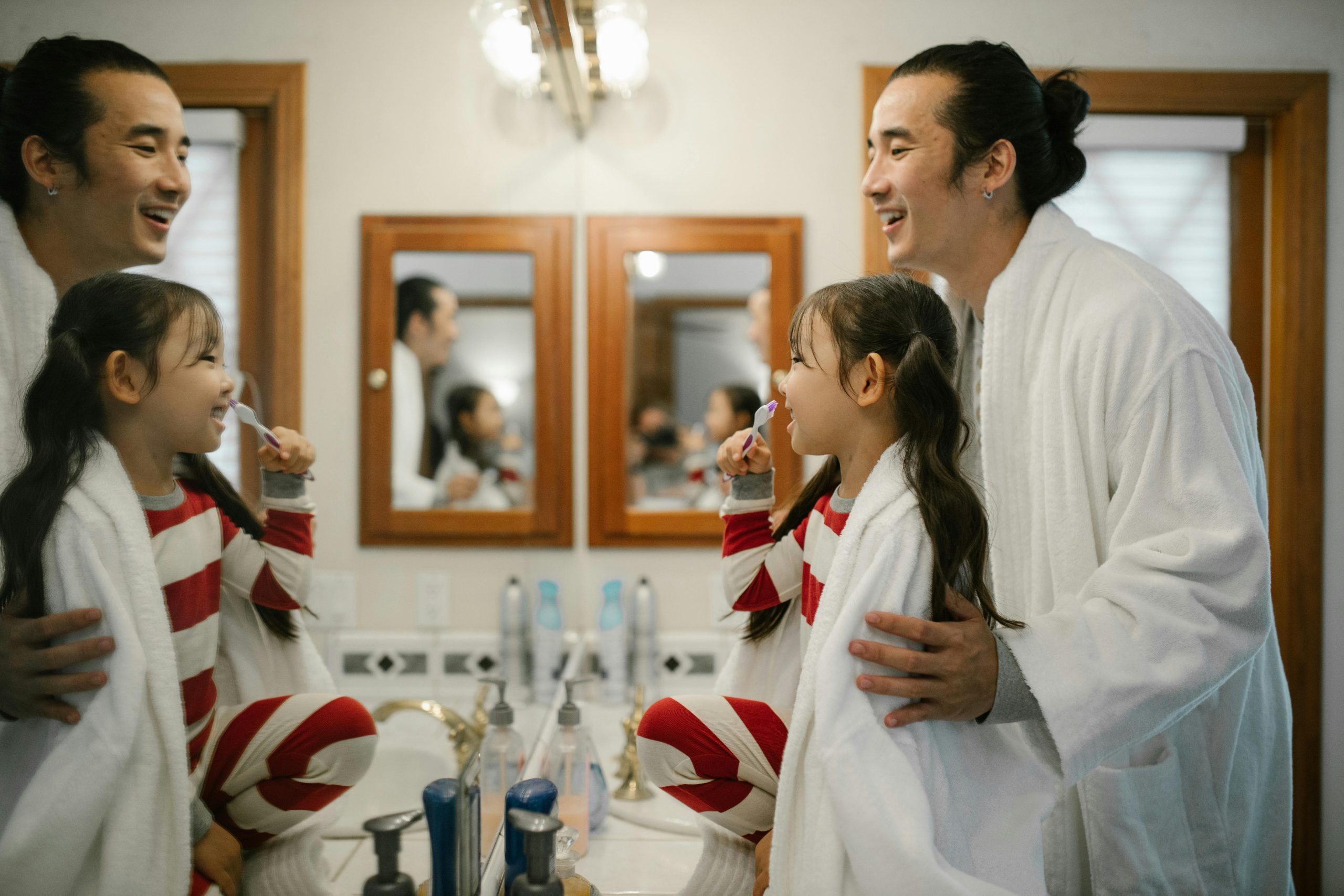As a parent, ensuring your child develops healthy oral hygiene habits is one of the most important gifts you can give them. A bright, healthy smile not only boosts confidence but also prevents cavities, gum disease, and other dental issues later in life. Teaching kids proper oral care doesn’t have to be a struggle—with the right approach, you can make brushing and flossing fun while instilling lifelong habits. This guide covers everything you need to know to set your child up for a lifetime of healthy smiles.
Why Oral Hygiene Matters for Kids
Good oral hygiene is about more than just fresh breath—it’s essential for overall health. Poor dental care in childhood can lead to cavities, infections, and even problems with speech development or nutrition. Teaching kids early helps them avoid painful dental procedures and establishes routines they’ll carry into adulthood.
Key benefits of proper oral hygiene for kids:
- Prevents cavities and tooth decay
- Reduces the risk of gum disease
- Promotes healthy adult teeth
- Boosts self-esteem with a bright smile
- Supports overall health by preventing infections
When to Start Teaching Oral Hygiene
Oral care should begin even before your baby’s first tooth appears. Wiping gums with a clean, damp cloth after feedings removes bacteria and gets your child accustomed to oral care. Once the first tooth erupts (usually around 6 months), introduce a soft-bristled baby toothbrush and a tiny smear of fluoride toothpaste.
Age-by-age oral hygiene milestones:
- 0-6 months: Clean gums with a damp cloth
- 6-12 months: Brush first teeth twice daily with fluoride toothpaste (grain-sized amount)
- 1-3 years: Supervise brushing, introduce flossing when teeth touch
- 3-6 years: Teach independent brushing (with supervision)
- 6+ years: Encourage full independence while monitoring habits
Fun Ways to Teach Kids Proper Brushing and Flossing
Making oral hygiene enjoyable helps kids stay engaged. Turn brushing into a game, use storytelling, or let them pick their own toothbrush to spark excitement.
Creative Brushing Techniques
Try these fun methods to make brushing a hit:
- Use a timer or a 2-minute song to ensure thorough brushing
- Let your child brush a stuffed animal’s teeth first
- Create a reward chart with stickers for consistent brushing
- Brush together as a family to model good habits
Making Flossing Fun
Flossing can be tricky for little hands, but kid-friendly tools help:
- Use floss picks in fun colors or shapes
- Turn flossing into a “treasure hunt” for hidden food particles
- Practice with playdough to teach the motion
Choosing the Right Dental Products for Kids
Not all toothbrushes and toothpaste are created equal. Selecting age-appropriate products makes oral care easier and more effective.
Toothbrush tips:
- Opt for soft bristles to protect gums
- Choose a small head for easy maneuvering
- Let your child pick a design they love (favorite character, color, etc.)
- Replace toothbrushes every 3-4 months or after illness
Toothpaste recommendations:
- Use fluoride toothpaste (pea-sized amount for ages 3+)
- Select kid-friendly flavors (avoid mint if it’s too strong)
- For toddlers, use a grain-sized smear to minimize swallowing
Common Oral Hygiene Challenges and Solutions
Even with the best efforts, kids may resist brushing or develop bad habits. Here’s how to tackle common issues:
Refusing to Brush
If your child fights brushing, stay patient and try:
- Letting them choose their brush and toothpaste
- Turning it into a game (e.g., “Find the hidden sugar bugs!”)
- Using positive reinforcement (praise, small rewards)
Swallowing Toothpaste
Teach kids to spit by making it fun—practice in the bathtub or use a “spit cup.” For toddlers, use minimal toothpaste to reduce risk.
Fear of the Dentist
Ease dental anxiety by:
- Reading books about dentist visits
- Role-playing at home with a toy dental kit
- Choosing a pediatric dentist experienced with kids
Conclusion
Teaching kids proper oral hygiene sets the foundation for a lifetime of healthy smiles. By starting early, making it fun, and leading by example, you can help your child develop habits that prevent cavities and promote confidence. Remember, consistency is key—keep brushing and flossing a non-negotiable part of their daily routine. With patience and creativity, you’ll nurture a positive attitude toward dental care that lasts well into adulthood.
